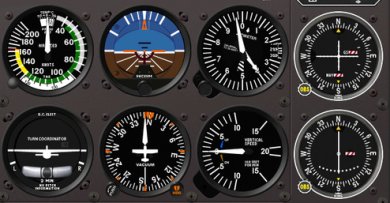|
I've started training for my instrument rating. The IR is essentially
the second half of a pilot's license; it lets you fly in clouds when you
can't see the ground and have no visual reference to navigate or even
stay upright. It's a pretty demanding rating and takes about the same
amount of training as the basic private pilot's license. More book learning
than the PPL, so I'm hoping it will go relatively easily.
 The other half of the challenge is conceptually understanding where you're going, particularly when flying an instrument approach. You better fly the course right or else instead of being in a cloud in a valley you may end up inside a mountain. The extra workload of dealing with charts and radios means you can't fully concentrate on the instruments. It's amazing how quickly some mysterious force will cause your plane to drift 30° off course and lose altitude when you spend 10 seconds looking at a chart. I've got some 5 hours of simulated instrument training so far and I'm pretty overwhelmed. The solution is practice. Basically a brain workout, training it to be able to handle the extra workload. It'll get easier to keep the plane flying the direction I want. And as I get familiar with approach and radio procedures it will require less thinking to do everything right. Maybe some day I'll even stop confusing my left from right! It's a bit frustrating that half my instrument training is for skills that are on the way to obsolesence. In the real world I'm going to do be doing all my flying with a WAAS enabled GPS and a very capable autopilot, where flying an approach is mostly a matter of punching the right buttons on the computer. But I still have to learn the older radio navigation technologies. And, of course, learn to do it all by hand in case I don't have the fancy gear. |
||
